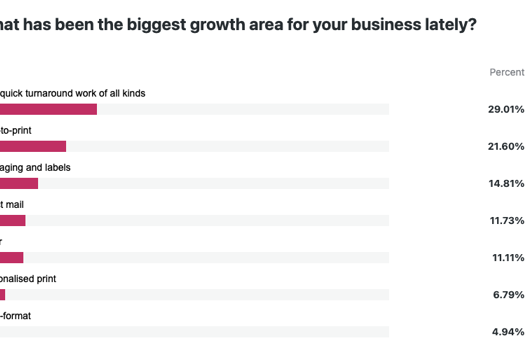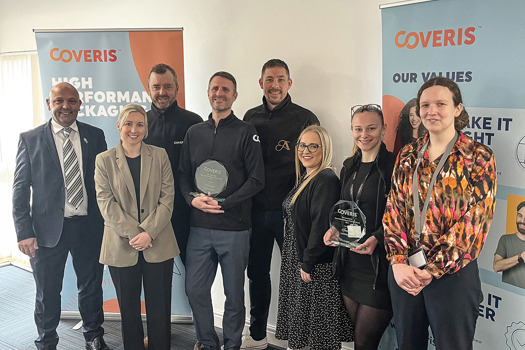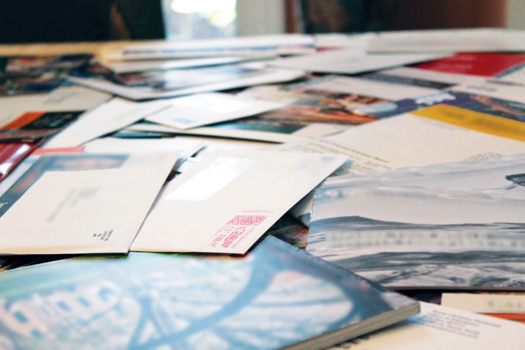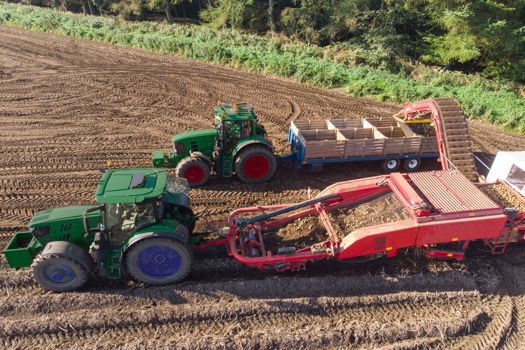Entry level is about £20,000 for an A3 bed model that can print multiple items at once, but if you can cope with A4/A5 beds then you’ll get one for less than £8,000.
Mostly using UV-cured inks, they can print directly onto a wide range of solid/rigid and non-absorbent materials and objects, allowing entry into personalised giftware, custom industrial components and small signage. Materials they can handle include glass, metal, wood and hard plastics. Some printers offer a primer ink for difficult surfaces. Jigs (also called print guides) can be set up to allow multiple small items to fill the bed and be printed in one pass.
For decades screen and pad processes were the main ways to directly print small customisable objects, from corporate gifts to industrial components. They worked well and the ink was very durable, but like any analogue process, the need for plates and meshes added costs and delays, so only relatively long runs were economical.
Small flatbed inkjets shook up this market with on-demand printing that can be profitable for one-offs, personalisation, prototypes and short runs. Beyond the consumer market, small flatbeds are being used to print small signs, instrument panels, switches, and control plates, again the former preserve of pad or screen process.
Sales arguments
Chris Martin, sales manager of CMYUK, a Mimaki Premium Partner, highlights the application potential of small flatbeds: “They are short-run solutions for work previously done by screen printers or pad printers. They are economical for short runs up to a hundred or two, though not 10,000.”
Martin Southworth, partner sales manager (Industrial Products) at Mimaki’s UK distributor Hybrid Services, echoes this, pointing out how businesses beyond traditional printing companies are adopting these technologies.
He says: “Companies that print, not necessarily ‘printing companies’, but manufacturers that have some element of printing in their workflow, are continuing to evolve their processes to incorporate, and benefit from digital print.
“Digital printing offers many advantages over screen and pad printing methods,” he adds. “These include low startup costs, the ability to print short runs, the wide range of colours and photographic quality output that can be incorporated, and the capability to offer variable content without incurring additional costs.”
“When the small flatbeds were first launched by Mimaki, we wondered how to sell them,” Martin recalls. “But people can use them to build their own businesses – maybe with Etsy or Not On The High Street. Some people have two, three, four or five in banks, so they can print in-house. We ask them why not buy a large one, but they say they like the flexibility.
“I’ve seen people take them to pop-up shops, for anything that might have your name on it that you might buy. We’ve even seen them in stores such as Selfridges where they can personalise handbags.”
Steve Woods, managing director of Axzyra in Conington, Cambridgeshire, supplies the Apache range of small UV flatbeds and also the AX-Ultra belt-fed single-pass inkjet that’s available with either a water-based ink or the more usual UV-cure. He says that water-based inks are useful for food related packaging items: “Pizza boxes, paper bags, tote bags, paper cups. Paper bags are getting popular again as the market turns against plastics.”
For UV ink he says there is also an environmental appeal. “Local to us is a big US golf supplier, Acushnet, with the Titleist brand. They use lots of pad and screen print for golf balls and the like. We’re recently persuaded them to take a couple of our UV machines. It’s because the ink tech is almost as good as pad or screen printing, but with a lot less setup, cleaning chemicals, disposal of waste plates and pads, etc. A lot of customers are looking at us because of concerns over health and safety, and the environment, etc.”
What’s available?
The first major manufacturer to launch a ‘baby flatbed’ was Mimaki with its A3 format UJF-3042 in 2010. It has steadily upgraded it over the years, while introducing two larger size ranges. Current models are the UJF-3042 Mk IIe (A3-plus size, for about £20,000) and UJF-6042 Mk IIe (A2, for about £32,000), both with 153mm max object depth. The larger UJF-7151plus (710x510mm, about £40,000) bridges the gap to the JFX-200 full-sized flatbed and has a metallic ink option.
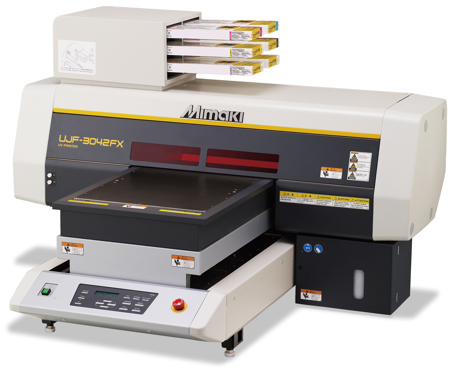
Mimaki was followed by Roland DG with the small-format VersaUV LEF-12 and has extended the range since then; its latest model is the first of a new series, the £26,499 VersaObject MO-240 UV models with an A2-plus print area, maximum object height of 204mm and ability to print on modest curves. It’s 20% faster and with an almost 10% larger printing area than the VersaUV LEF-300 it replaced. “Our core target market for this product is PSPs – particularly those producing promotional products,” said Francisco Lozano, product manager, UV & Cutters for Roland DG EMEA. “This printer is also aimed at factories and brands that produce or outsource products with screen or pad printing.”
Roland also makes a unique eco-solvent flatbed, the A2-format SF-200, costing £20,999. It takes 100mm high items. The inks are suited to plastics and are rated toy-safe.
There are a quite a lot of others in the same marketplace. Some, like Croatia’s Azon, first started by taking Epson (water-based ink) or Mimaki UJF UV print units and building them into their own flatbed media units, typically with the ability to take significantly higher target objects than the Mimaki originals.
The UK’s Axzyra commissions flatbed and belt-fed small-format printers built to its own specs in Shenzhen in China. The main flatbed is the Apache series, available in three models with 450x450mm, 650x450mm, 600x900mm (the biggest seller) or 1,200x1,200mm beds. There’s also the belt fed 900mm wide Flux UV Geni model with unlimited item length. The maximum substrate height is 150mm on all but the smallest format, which takes up to 120mm
These are all multi-pass printers with scanning printheads. Last year Axzyra introduced the AX-Ultra, which positions a single-pass colour head at any point over a wider belt feed. The standard head width is 236mm, with 472mm, 708mm and 944mm options. Belts are 600mm, 1.2m or 2.0m wide. Starting price is £35,000.
Axzyra’s Woods says “There are plenty of printers out there with multiple original small flatbeds, that are getting older now and due for replacement. There’s a market for the newer more efficient printers. Our entry level is £23,000.”
Epson historically had little interest in flatbeds, but earlier this year it announced its first small one, the very compact A4-format SureColor V1000, at the very keen price of £7,700. It takes solid flat objects up to 70mm high and offers CMYK plus white and varnish. Its small format and attractive price are likely to appeal most to retail stores, pop-ups and point-of-presence users, as well as small professional crafters. Roland’s smallest flatbed is the VersaStudio BD-8, with a smaller A5 bed size than the Epson but a price of £7,999. Neither company reveals throughputs, so other comparisons are difficult.
Jigs and alignment
Jigs are essential for keeping items secure on the printer bed, ensuring accurate placement of designs. These can range from quick and inexpensive wood or foam holders to custom fixtures costing £300 to £500.
Software templates are used to set up positioning to match the jigs, and may output matching CAD files to guide computer cutters for jigs.
Camera vision to find hand-placed items on the bed without jigs has been demonstrated for years, but hasn’t reached the main models yet. However, Woods from Axzyra has just returned from a trip to China and says their time is coming. “What’s noticeable is the belt feeds, where you can just throw items onto them and the camera will detect the alignment and print in position to within a millimetre or two. They are getting a lot cheaper and more accurate now.”
At Drupa Mimaki was demonstrating two UJF-7151plus II flatbeds being loaded and unloaded by a single cobot arm, and said that it could handle three given enough space.
Printing on curved surfaces
Direct printing on uneven or curved surfaces has historically been challenging for any process, hence the development of pad and rotary screen. Mimaki and Roland offer rotators that allow the flatbeds to print on cylindrical objects such as bottles and cups, though they’re not very fast. Mimaki’s latest Kebab II for A3 and A2 beds is much faster than the original, however. Prices start about £2,500 on top of the printer cost.
Mimaki’s UJF series has a ‘long drop mode’, which slows the printhead to let it print on mildly curved surfaces, such as golf balls. Roland’s MO-240 has similar capability.
Low barriers to entry
Conventional large-format flatbed inkjets can easily cost well over £100,000 and often multiples of that. Not to mention taking up a lot of floor area. A baby flatbed can cost as little as £20,000 (or under half that for the smallest models) and it will fit in any odd corner, even in an office. For printers looking to break into new and interesting markets, it may be worth taking a punt.







